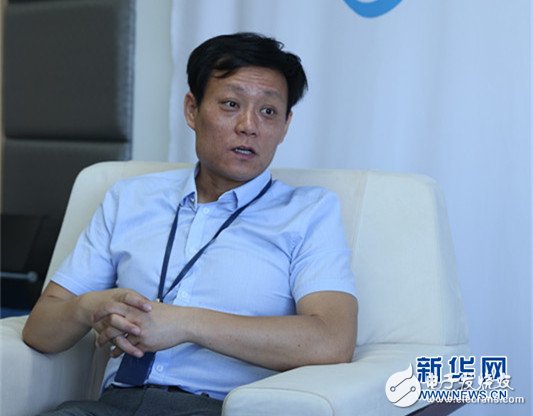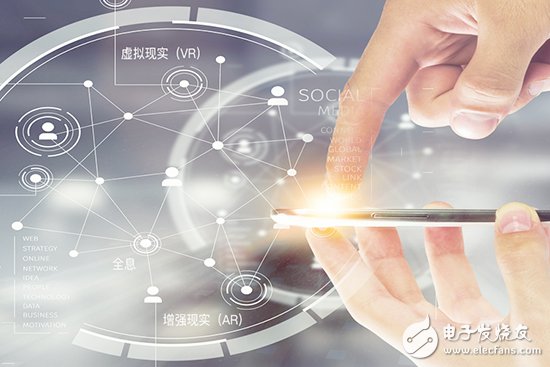What do you think of when it comes to 5G?
Is it incredibly super high speed? Or is it a 3D holographic projection that has appeared many times in sci-fi movies such as "Mission Impossible" and "Iron Man"?
The official version of the 5G first edition will be released this month, which means that the above two situations are a step closer to our daily life.
Unhappy, not unexpected?
However, the changes brought about by 5G technology go far beyond this. In a conversation between Dr. Yang and Dr. Yang Guang, General Manager of the Industry and Business Cooperation Department of China Mobile Communications Research Institute, Dr. Yang painted a beautiful picture of smart life in the 5G era: 5G smart medical vehicles, networked drones, new 3D holographic projection interaction and so on.
So, 5G is really coming, are you ready?

Dr. Yang Guang, General Manager of the Industry and Business Cooperation Department of China Mobile Communications Research Institute, accepted an exclusive interview with Si Ke.
Compared with 4G, what are the technological leap of 5G?
In terms of communication capabilities, 5G technology has three major characteristics. The first is a higher transfer rate, which is why people often say that the network speed is faster. The transmission rate of 4G is about 100 megabits per second (bit/s), the transmission rate of the first phase of 5G is several G, and the second phase may be more than a dozen G, and the rate is continuously increasing.
Second, the number of connections is more, and more connections can be created in the same area. On the basis of connecting people, more things are connected.
Third, the delay in the communication process will be lower and lower. In the era of traditional personal information consumption, latency is more expressed as an interactive experience, such as the delay in the game. However, in the fields of transportation and industrial manufacturing, delay is closely related to safety. For example, the delay required for automatic driving, the delay used in industrial control, etc. Driven by 5G technology, the delay in these aspects will be significantly reduced.
What subversive experiences can 5G bring to our lives?
In the age of smartphones, we are used to a variety of interactions, such as video, images, and voice. Nowadays, all kinds of APP applications on the Internet interact in this way, satisfying the needs of our travel, food, entertainment and other aspects. In the 5G era, the resolution of images and videos used in interactions will become higher and higher. For example, high-definition, 1080 images, and images and videos with higher clarity such as 4k and 8k in the future. However, on a small mobile phone screen, the user's experience with high-definition images may not be much different from normal sharpness images. At this time, the interaction method needs to change, and the advantages of HD are exerted.
Changes in the way of interaction, we can now see holographic, virtual reality (VR) / augmented reality (AR), which can be used to guide a large amount of data through the mobile phone, which will generate more imagination in the new interaction mode. Less than the application.
As we saw in sci-fi movies, holographic projections cast a 3D holographic image, allowing users to perform stereoscopic, three-dimensional interactions anytime, anywhere, in a more direct way, through eyes, touch, and more.
Changes in the way of interaction, we can now see holographic, virtual reality (VR) / augmented reality (AR), which can be used to guide a large amount of data through the mobile phone, which will generate more imagination in the new interaction mode. Less than the application.

The large amount of data is diverted through the mobile phone, and in the new interactive mode, more applications that we can't imagine will be generated.
What social pain points can 5G help solve?
Based on the above three communication capabilities, 5G also has two features that support mobile and user ubiquity in its applications. Its connectivity and coverage are ubiquitous. Such features will be energy, medical, transportation, and education. Other industries have brought about disruptive changes.
For example, medical aspects. At present, there are imbalances in the distribution of medical resources throughout the world. For those areas where medical resources are relatively scarce, it is impossible to supplement quality medical resources in a short period of time by increasing investment alone. However, 5G can help these areas improve their medical conditions from the perspective of smart telemedicine.
Give a case of current application, 5G smart mobile medical car. It can penetrate deeper areas, and the medical equipment equipped in the car, such as B-Super Color, can accurately collect patient information, and return to the areas with more abundant medical resources in real time to access medical institutions with more developed medical standards. On the receiving medical device, the doctor can not only accurately see the patient information, but also can treat the patient through remote touch.
In terms of energy, the power system is taken as an example. The power system has a very high demand for information transmission. The traditional way of handling is to build some private networks. The private network only builds a network for special purposes, and it is difficult to use the scale effect of the network, so the cost is high. In addition, the flexibility of the private network is relatively low, and once the demand changes, it is difficult to meet the needs of change. At the beginning of the design, the 5G system takes into account this special industry demand and has strong flexibility to prepare for future upgrades of various communication capabilities.
In addition, new energy sources in the power industry, such as solar energy, hydropower, wind power and other new energy sources, have higher demand for communication, such as rapid load scheduling, etc., 5G ubiquitous coverage, low latency capability can well meet this aspect. Demand.
After 5G is put into commercial use, is the tariff expensive?
5G is a technical upgrade, the purpose is to provide customers with better service, the unit price of communication tariffs will certainly be reduced, in the 2G, 3G and 4G upgrade process, this trend has been very obvious, data traffic and voice prices have been It continues to decline. However, the level of tariffs and the expenditure of customers are not only related to the technology itself, but also related to various factors such as technology maturity, industry size, investment planning, customer habits, etc. It is difficult to make accurate predictions. But we can be sure that with the advancement of technology, in the long run, the unit price of traffic will definitely decrease.
5G brings huge business opportunities, how can this money be earned?
Although the current 5G industry and commercial aspects are just getting started, we may wish to think about the business model of the 5G era. I think there are probably three categories.
The first is the traditional toC mode, which means buying traffic online. The business model of this 4G era will certainly not disappear.
The second category is the toB model, which uses 5G technology to provide customized services for the energy, medical, and education industries. For example, as we mentioned earlier, it provides a dedicated connection for information transmission and information collection in the energy industry. This is a customized service, and the quality and safety of information transmission and collection can be guaranteed.
This may take a new business model, not charging by traffic, but charging according to the value of the service, such as how much money is charged for a custom service, and how much to charge for a custom service.
The third category is toB plus toC, for example, networked drones, 5G enabled civilian drone industry, the formation of 5G network drone services and products, and ultimately provide services for the majority of individual users. For example, the networked drones used in the logistics industry.
Although Amazon and JD.com are currently trying similar services, the UAVs they use today are not network-connected. They can only be delivered according to pre-set routes. Once they encounter any unexpected problems on the way, they cannot be resolved in time. If it is remote delivery, it is impossible to track the progress of the logistics in time. I don't know if the goods were delivered. The networked drone can solve these problems and achieve precise control of the drone.
The networked drone can solve these problems and achieve precise control of the drone.
5G can make the network UAV as accurate and flexible as the courier?
UAVs are now one of the more mature 5G applications. Because it can move in a relatively free space, it can also transmit information and materials in the process of moving, which is a good communication medium. UAVs are now used for personal entertainment, such as aerial photography. In fact, the application of drones in the industry, especially in the fields of plant protection, power inspection, security, logistics and other industries will soon appear blowout.
All kinds of applications of the above 5G network UAVs need to use 5G as the basic capability.
The first is to provide supervision of networked drones based on the ubiquitous coverage capability of 5G. The drone was on the sky and had to know where it went. Therefore, it is possible to consider installing a SIM card on the drone and connecting to the supervisory platform, and using the 5G capability to connect the information of each drone to the platform. This is equivalent to the real-name authentication of mobile phones. With the networked drone, it is possible to avoid black fly and drone out of control.
The second is to provide multimedia information backhaul based on the high-speed information transmission capability of 5G. Through the 5G network, not only can more comprehensive information be collected at the far end, but also multimedia information such as images, videos, and 3D videos can be returned, so that the local control person can grasp the more accurate actual situation.
The third is to provide accurate remote control based on 5G's low latency and fast response capability. For example, the network UAV is used in the logistics industry. It can be as precise and flexible as the courier, and has a certain real interaction with the user, so that not only the goods can be delivered to the destination on time and accurately, but also the emergency can be handled. More than enough.
Coaxial Cable,Coax Cable,BNC Cable,CCTV Pre-made Cable,DC power splitter
Chinasky Electronics Co., Ltd. , https://www.cctv-products.com